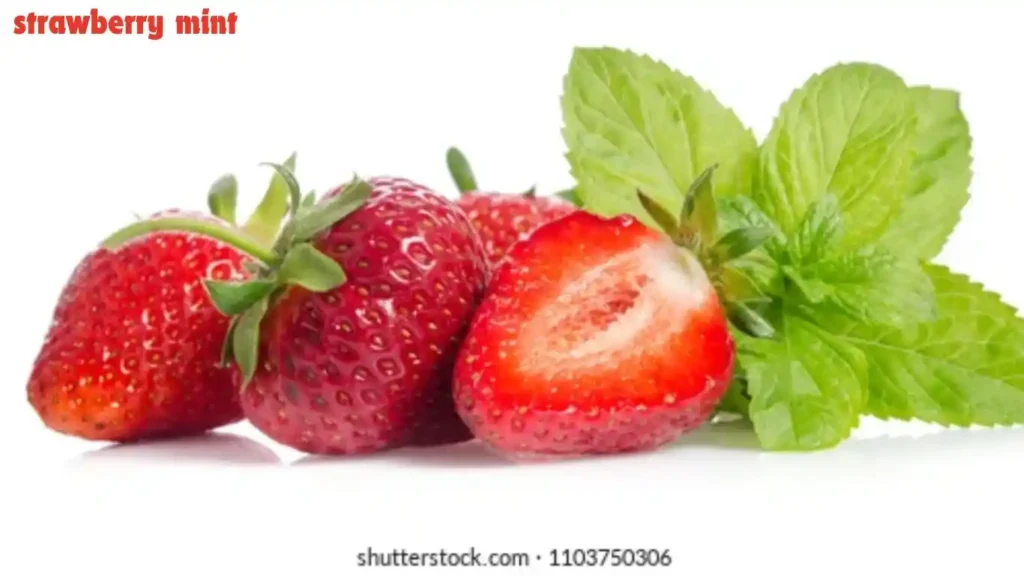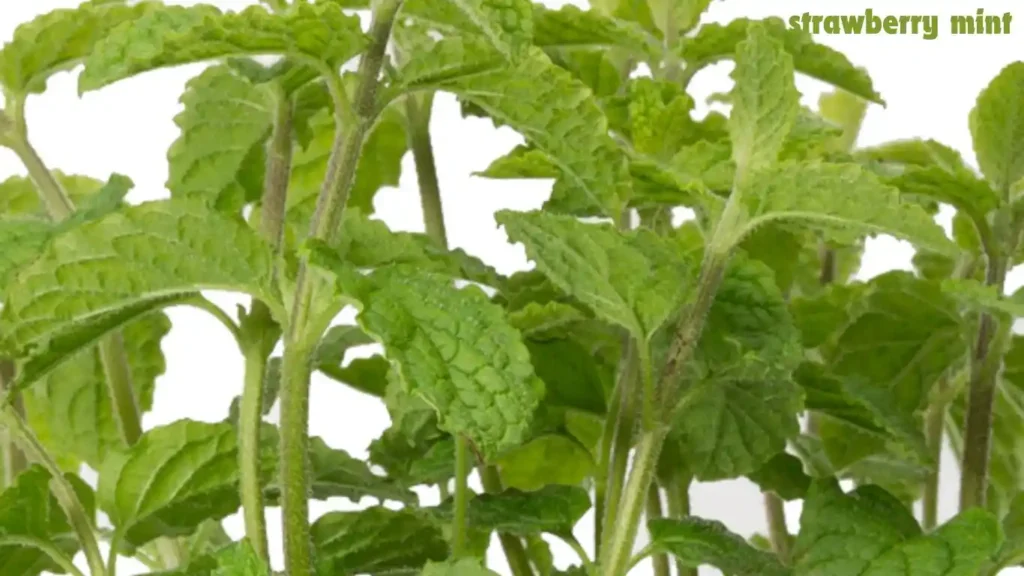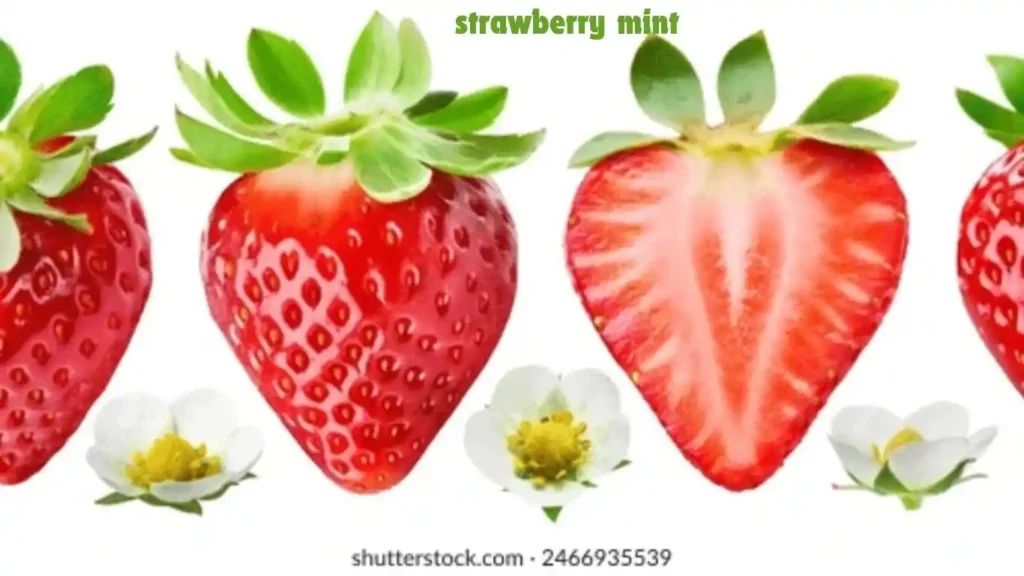Grow Best Strawberry Mint | Planting, Care & Uses
The strawberry mint plant, generally called Mentha × piperita ‘Strawberry’, is a great flavor that joins the strengthening taste of mint with a spray of sweet strawberry.
This half-and-half plant is a well-known decision for the two groundskeepers and culinary fans because of its special flavor profile and flexibility.
Whether you’re a carefully prepared nursery worker hoping to grow your spice assortment or a cooking lover nervous to explore different avenues regarding new flavors, the plant makes sure to charm your faculties.
Understanding Strawberry Mint Plant
The plant is a combination variety that has a spot with the Mentha sort, a piece of the Lamiaceae family.
It is acknowledged to have begun from the crossbreeding of peppermint (Mentha × piperita) and spearmint (Mentha spicata).
This exceptional blend brings about a plant with a recognizable minty scent and taste, upgraded by unpretentious notes of strawberry.
As far as appearance, the strawberry mint plant regularly develops to a level of 12 to 18 inches and includes magnetic herbage portrayed by lively green leaves touched with purple.
The leaves are oval-formed with jagged edges, and the plant might create little, fragile blossoms in tints of pink or lavender during the developing season.
One of the central qualities of the plant is its awesome aroma, which is suggestive of both mint and strawberries.
At the point when crushed or wounded, the passes on discharge a refreshing smell that adds to the general charm of the plant.
Developing Strawberry Plant
Developing strawberry mint plants is fairly direct, however, giving the right circumstances is basic for securing solid development and the greatest flavor. Here are a few critical necessities and ways to develop strawberry mint:
Soil: Well-depleting soil is key for the plants to forestall waterlogging, which can prompt root decay.

Change weighty dirt soil with a natural point, for example, fertilizer or peat greenery to further develop seepage and ripeness.
Watering: Keep the dirt reliably moist but not waterlogged. Water profoundly at whatever point the top inch of soil feels dry to the touch. Stay away from overwatering, as extreme dampness can advance infectious illnesses.
Daylight: plants flourish in halfway daylight to fractional shade. Pick an area in your greenhouse that gets no less than 4-6 hours of daylight each day, ideally during the morning or late evening when the sun is less powerful.
Dividing: While establishing a strawberry mint, space the seedlings or cuttings around 12 inches separated to consider sufficient wind stream and forestall stuffing. This reduces the gamble of contagious illnesses and certifies solid development.
Method
Keep away from over-the-top treatment, as these plants are somewhat low-support and can grow in well-rich soil.
A decent compost applied sparingly in spring and summer is generally good to help sound growth.
Strawberry Mint Bit By Bit Guide
Founding is a straightforward cycle that should be possible either from seeds, cuttings, or starter plants. Here is a bit-by-bit manual for setting in your greenhouse:
Pick a Useful Area: Select an area in your greenhouse that gets central daylight to fractional shade. Ensure that the dirt is well-depleting and change it with natural matter if important to also develop fruitfulness and waste.
Position Up The Soil: Primary to planting, set up the soil by slackening it with a nursery fork or digging tool. Eliminate any weeds, rocks, or waste that might disrupt the development of this plant.
Sowing Seeds Or Seedlings: In the case of planting seeds, sow them straightforwardly into the pre-arranged soil as per the guidelines on the seed packet.
On the other hand, you can begin seeds inside in pools or plates and migrate them outside whenever they have fostered a few arrangements of natural leaves.
Water Completely: Following planting, water these plants completely to help with settling the ground around the roots. Ensure that the soil is uniformly moist yet not waterlogged.
Watering: Keep up with constant dampness levels in the dirt by watering your strawberry mint plants always.

Check the dirt dampness now and again and water profoundly when the highest inch of soil feels dry to the touch. Stay away from overwatering, as this can cause root decay and other contagious sicknesses.
Pruning: Ordinary pruning is fundamental for keeping these plants minimized and ragged.
Squeeze back the stems consistently to support the development of new leaves and keep the plants from becoming leggy. Center around stopping any dead or yellowing leaves to keep up with plant wellbeing.
Culinary Intents
Strawberry mint is a flexible spice that adds a reviving turn to a great many culinary manifestations. Here are some delectable ways of integrating them into your cooking
Refreshments: Add new passes on to custom-made lemonades, chilled teas, and organic product-imbued waters for an explosion of reviving flavor.
You can likewise obfuscate the leaves with sugar to make a delightful syrup for mixed drinks and mocktails.
Mixed Greens: Prepare slashed strawberry mint leaves with new greens, strawberries, and feta cheddar for an energetic and invigorating serving of mixed greens.
The minty-sweet kind of the leaves supplements different fixings wonderfully, adding profundity and intricacy to the dish.
Spices And Dressings: Mix leaves with olive oil, vinegar, and garlic to make a delightful plate of mixed greens dressing or marinade for barbecued meats and vegetables.
You can likewise use the leaves to implant spices and syrups with a spray of minty pleasantness.

House-Grown Teas: Brew new or dried strawberry mint passes on to make a relieving and sweet-smelling natural tea.
Just steep a small bunch of leaves in steaming hot water for a couple of moments, theme, and enjoy. You can likewise add different spices like lemon cream or chamomile for added taste and unwinding.
Pollinator Nurseries: Draws in honey bees, butterflies, and different pollinators with its aromatic blossoms, making it an important expansion to pollinator gardens.
Plant it close to other nectar-rich plants to make an attractive living space for helpful bugs and backing nearby pollinator populaces.
Rosemary (Rosmarinus officinalis): Rosemary is a solid spice that matches well with the weak kind of strawberry and can be utilized together in different culinary dishes. Plant rosemary close by them to make an outwardly unique and sweet-smelling spice garden.
Lemon Ointment (Melissa officinalis): Lemon ointment and the two individuals from the mint family offer relatively developing propensities and flavors.
Plant them together to make a lavish and sweet-smelling spice garden that is however beautiful as it very well might be utilitarian.
By selecting these buddy plants close by your strawberry plant, you can make a different and dynamic nursery that isn’t just outwardly amusing but further useful for the well-being and efficiency of your plants.
Explore different avenues regarding various blends to find the ideal partners for your strawberry mint greenhouse.
Conclusion
In conclusion, is a universal and lovely herb with many culinary, medicinal, and decorative benefits.
From its sweet and minty flavor to its lush foliage and colorful flowers adds a special touch to gardens, kitchens, and indoor spaces.
Whether using it to flavor beverages, garnish dishes, or create herbal remedies, strawberry mint will surely delight your senses and improve your overall well-being.
With proper care and maintenance, you can enjoy fresh there leaves year-round, savoring their delicious flavor and smell whenever the mood strikes.
So why add these plants to your garden or indoor herb collection today? With its easy cultivation, abundant harvests, and countless uses, will evolve into a beloved staple in your home and garden for years.
FAQS
Can you eat strawberry mint?
The stem, leaf, and flowers of strawberry mint are palatable.
What does strawberry mint taste like?
A smaller mint plant, with smaller bluish foliage and very compact. It definitely smells like strawberries and the foliage has hints of strawberry flavor when counted to food or liquids. A fun mint to grow in a receptacle or hanging basket.
Is Sweet mint safe to eat?
Sweet Mint is non-toxic, but it’s smart to observe for any unusual responses, particularly if your child has a history of allergies.
Can mint grow without sunlight?
Does mint grow short in shade or full sun? Your mint plant will thrive in full sun (6 to 8+ hours of direct sunlight per day); yet, it will grow in areas of part shade (2 to 5 hours of direct sunlight per day).
Are mint and pudina the same?
Mint (pudina) is a nail in Indian cuisine used for flavoring curries and other dishes.
Post you may like

2 Comments